Guest Post from Amanda Preston
Amanda Preston is an adoptive and foster mama of 8 from a suburb of Vancouver, BC. She is also a social worker and founder of a Canadian nonprofit organization that helps find homes for kids, especially for children with special needs and older tweens/teens in Canada’s foster care system. Amanda reached out to guest post here about the value of truth and openness in adoption situations in which the rights of first parents have been terminated.
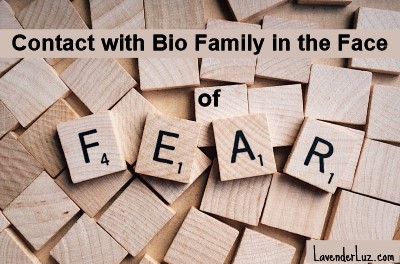
Adoptees Deserve Their Truth
Amanda: Adoption knowledge has come a LONG way over the last 100 years. If history has taught us anything, it is the importance of adoptees knowing their story. Knowing their truth. And really knowing their biological family.
Thankfully, today the message prospective adoptive parents are receiving is that openness is crucial in helping support a child form their identity and sustain a more positive and healthier upbringing.
But What if Contact with Birth Parents isn’t an Option?
In foster care adoptions, the circumstances surrounding the reasons for adoption is quite contrary to that of newborn domestic adoptions. The majority of children have been removed from their biological parents, and often have no contact with biological parents by the time an adoption is in place. I am currently parenting 8 children through foster care adoptions and this is my truth. This lack of contact can be due to many factors including:
- Confidentiality: Last names may not be not shared in the birth history.
- Life circumstances: Many parents may be homeless or incarcerated without access to email or social media, or they may not have a physical address.
- Addiction: Some parents may be dealing with the disease of addiction, unable to sustain healthy and reliable contact.
- History of abuse or neglect: Some children have experienced horrific abuse, and exposing them to their abusers can be traumatic and detrimental to their healing
While this list isn’t exhaustive, and contact may be possible in some of these instances, it does provide a glimpse into the rationale for why contact may not always be achievable. With our first four adoptions through foster care we had only one child whose birth mother wanted contact, and even then, she disappeared after the first several years. For the other three, however, we needed to be more creative in finding connections to their biological family.
Think Outside the Box
In these situations, do not waver in your attempts to find biological connections. It is important to think outside the box and get creative in finding other family members.
1. Don’t stop with birth parents. Meaningful contact can include any biological family members, as well as important and loving people in your child’s past. Some other options to pursue outside of the biological parents might include: siblings (including those adopted by others), aunts or uncles, cousins, teachers, grandparents, coaches, or old friends. We have been thankful in finding relationships with siblings adopted by other families, as well as with aunts and uncles of our children, who now all play prominent roles in their lives.
2. Be persistent. Don’t stop with a simple Google search. Look through adoption records for clues, and search Facebook, Instagram, and public records for family members with the scraps of information you have. We were able to locate multiple relatives through social media that we would otherwise never have known!
3. Tread lightly. Sometimes, family members are unaware of the existence of your child. You must carefully consider whether you feel comfortable being the one to inform them of a child the birth parents may have kept secret.
The rule of thumb in our family is to tell our children about the family member as soon as we are aware of them, but do not contact the relative unless they are of legal age, or they have a guardian/parent we can contact instead. With two of our children, the adoptive parent of their siblings did not want to tell her children about my mine. Unfortunately, this meant we lost many years with them. As soon as the oldest child came of age, however, we informed her of their connection, and have slowly begun a new relationship with her. Other efforts have been more fruitful, however, so do not give up hope if a single pursuit turns sour.
4. Harness the power of DNA. Ancestry DNA is one of the biggest and most popular DNA companies on the market. We have utilized their services for two of my children with great results (and plan to for other children soon). Beyond the fascinating ethnic composition piece, which my kids thoroughly enjoyed, it came with a link to other blood relatives who share the same DNA as the applicants. While the system doesn’t clearly state who people are in relation to you, they do specify how close of a relation they are. We have found many family members this way and a sibling of one of our children has even found us! You will want to discuss using this service with your child first, but my kids were very eager to discover relatives, and see others who look just like them!
5. Know that family can lead to more family. Often, family members you do have contact with have connections to other family members, so don’t be afraid to ask! They may have contact information or names to help broaden your search.
6. Encourage relationships. When possible, try and facilitate relationships vs simply knowing OF someone. We have been so thankful that many of my children get the opportunity to visit with half siblings and aunts and uncles every month. Others get to talk on the phone, and others have yearly visits. Do what works best for you and your family, but in a purposeful and meaningful way. The more your child knows their past and their biological family, the less they will question and fantasize about, and the stronger their identity foundation will be.
Although many of my children will never have the opportunity of knowing their biological parents, most of them will grow up connected to their biological family in some way. Hopefully these efforts will alleviate many of the questions so many past adoptees grew up wondering, and will only further grow our own extended network as we welcome new members into this thing we call family!
~~~~~
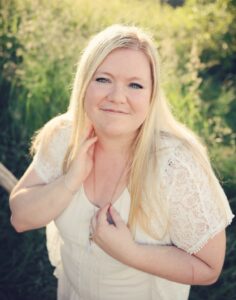
Amanda Preston is an adoptive and foster mother to 8 children, a social worker, blogger, and runs a national charity focusing on advocacy, awareness, education and support for all things adoption and foster care related. She is passionate about special needs, and an advocate for change in the child welfare system. You can find Amanda at her blog, My Lovely Crazy Life, on Instagram, or on Facebook.
See Also:
- How to Have Openness in a Foster Adoption by Addison Cooper, LCSW, in Advice Column
- How to Have Openness When You Can’t Have Contact with First Parents, in Advice Column
- Chapter 8 in The Open-Hearted Way to Open Adoption: Helping Your Child Grow Up Whole
- Contact ≠ Openness: The Open Adoption Grid
- Openness in International Adoptions: Healing the Split When There’s No Contact Possible
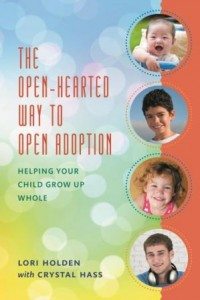
Lori Holden, mom of a young adult daughter and a young adult son, writes from Denver. She was honored as an Angel in Adoption® by the Congressional Coalition on Adoption Institute.
Her first book, The Open-Hearted Way to Open Adoption: Helping Your Child Grow Up Whole, makes a thoughtful anytime gift for the adoptive families in your life. Her second book, Standing Room Only: How to Be THAT Yoga Teacher is now available in paperback, and her third book, Adoption Unfiltered, is now available through your favorite bookseller!
Find Lori’s books on her Amazon Author page and catch episodes of Adoption: The Long View wherever you get your podcasts.

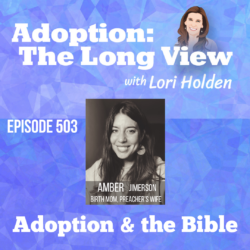
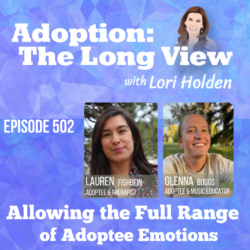
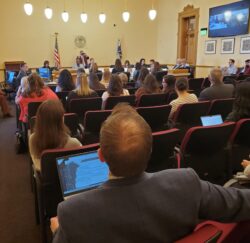
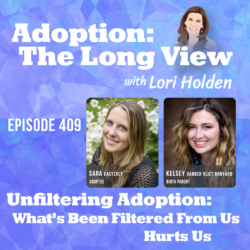
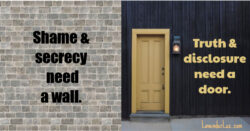
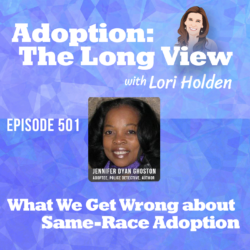
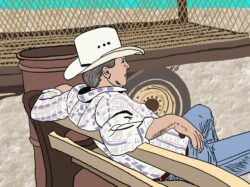
2 Responses
Very useful tips on an important aspect of adoptive parenting.
Thanks for tuning in, Gayle 💜.